Ezetimibe Promotes Brush Border Membrane-to-Lumen Cholesterol Efflux in the Small Intestine
- PMID: 27023132
- PMCID: PMC4811413
- DOI: 10.1371/journal.pone.0152207
Ezetimibe Promotes Brush Border Membrane-to-Lumen Cholesterol Efflux in the Small Intestine
Abstract
Ezetimibe inhibits Niemann-Pick C1-like 1 (NPC1L1), an apical membrane cholesterol transporter of enterocytes, thereby reduces intestinal cholesterol absorption. This treatment also increases extrahepatic reverse cholesterol transport via an undefined mechanism. To explore this, we employed a trans-intestinal cholesterol efflux (TICE) assay, which directly detects circulation-to-intestinal lumen 3H-cholesterol transit in a cannulated jejunal segment, and found an increase of TICE by 45%. To examine whether such increase in efflux occurs at the intestinal brush border membrane(BBM)-level, we performed luminal perfusion assays, similar to TICE but the jejunal wall was labelled with orally-given 3H-cholesterol, and determined elevated BBM-to-lumen cholesterol efflux by 3.5-fold with ezetimibe. Such increased efflux probably promotes circulation-to-lumen cholesterol transit eventually; thus increases TICE. Next, we wondered how inhibition of NPC1L1, an influx transporter, resulted in increased efflux. When we traced orally-given 3H-cholesterol in mice, we found that lumen-to-BBM 3H-cholesterol transit was rapid and less sensitive to ezetimibe treatment. Comparison of the efflux and fractional cholesterol absorption revealed an inverse correlation, indicating the efflux as an opposite-regulatory factor for cholesterol absorption efficiency and counteracting to the naturally-occurring rapid cholesterol influx to the BBM. These suggest that the ezetimibe-stimulated increased efflux is crucial in reducing cholesterol absorption. Ezetimibe-induced increase in cholesterol efflux was approximately 2.5-fold greater in mice having endogenous ATP-binding cassette G5/G8 heterodimer, the major sterol efflux transporter of enterocytes, than the knockout counterparts, suggesting that the heterodimer confers additional rapid BBM-to-lumen cholesterol efflux in response to NPC1L1 inhibition. The observed framework for intestinal cholesterol fluxes may provide ways to modulate the flux to dispose of endogenous cholesterol efficiently for therapeutic purposes.
Conflict of interest statement
Figures
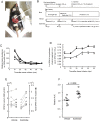
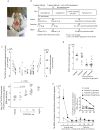
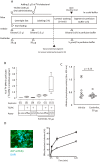
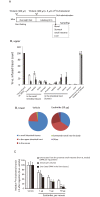
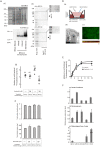

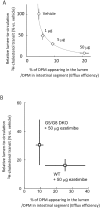
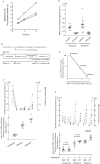
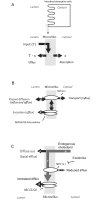
Similar articles
-
Luminal plant sterol promotes brush border membrane-to-lumen cholesterol efflux in the small intestine.J Clin Biochem Nutr. 2018 Sep;63(2):102-105. doi: 10.3164/jcbn.17-116. Epub 2018 Mar 30. J Clin Biochem Nutr. 2018. PMID: 30279620 Free PMC article.
-
A Newly Integrated Model for Intestinal Cholesterol Absorption and Efflux Reappraises How Plant Sterol Intake Reduces Circulating Cholesterol Levels.Nutrients. 2019 Feb 1;11(2):310. doi: 10.3390/nu11020310. Nutrients. 2019. PMID: 30717222 Free PMC article. Review.
-
Multiple plasma membrane receptors but not NPC1L1 mediate high-affinity, ezetimibe-sensitive cholesterol uptake into the intestinal brush border membrane.Biochim Biophys Acta. 2007 Sep;1771(9):1140-7. doi: 10.1016/j.bbalip.2007.05.011. Epub 2007 Jun 23. Biochim Biophys Acta. 2007. PMID: 17689140
-
Influence of class B scavenger receptors on cholesterol flux across the brush border membrane and intestinal absorption.J Lipid Res. 2009 Nov;50(11):2235-44. doi: 10.1194/jlr.M900036-JLR200. Epub 2009 May 19. J Lipid Res. 2009. PMID: 19454765 Free PMC article.
-
Development and physiological regulation of intestinal lipid absorption. III. Intestinal transporters and cholesterol absorption.Am J Physiol Gastrointest Liver Physiol. 2008 Apr;294(4):G839-43. doi: 10.1152/ajpgi.00061.2008. Epub 2008 Feb 14. Am J Physiol Gastrointest Liver Physiol. 2008. PMID: 18276831 Review.
Cited by
-
Luminal plant sterol promotes brush border membrane-to-lumen cholesterol efflux in the small intestine.J Clin Biochem Nutr. 2018 Sep;63(2):102-105. doi: 10.3164/jcbn.17-116. Epub 2018 Mar 30. J Clin Biochem Nutr. 2018. PMID: 30279620 Free PMC article.
-
Caco-2 Cells for Measuring Intestinal Cholesterol Transport - Possibilities and Limitations.Biol Proced Online. 2020 Apr 11;22:7. doi: 10.1186/s12575-020-00120-w. eCollection 2020. Biol Proced Online. 2020. PMID: 32308567 Free PMC article.
-
The Interpretation of Cholesterol Balance Derived Synthesis Data and Surrogate Noncholesterol Plasma Markers for Cholesterol Synthesis under Lipid Lowering Therapies.Cholesterol. 2017;2017:5046294. doi: 10.1155/2017/5046294. Epub 2017 Feb 22. Cholesterol. 2017. PMID: 28321334 Free PMC article. Review.
-
Transintestinal cholesterol excretion in health and disease.Curr Atheroscler Rep. 2022 Mar;24(3):153-160. doi: 10.1007/s11883-022-00995-y. Epub 2022 Feb 9. Curr Atheroscler Rep. 2022. PMID: 35138569 Review.
-
The Effects of Anthocyanin-Rich Bilberry Extract on Transintestinal Cholesterol Excretion.Foods. 2021 Nov 18;10(11):2852. doi: 10.3390/foods10112852. Foods. 2021. PMID: 34829135 Free PMC article.
References
-
- van der Velde AE, Vrins CL, van den Oever K, Kunne C, Oude Elferink RP, Kuipers F, et al. Direct intestinal cholesterol secretion contributes significantly to total fecal neutral sterol excretion in mice. Gastroenterology. 2007;133(3):967–75. Epub 2007/09/15. 10.1053/j.gastro.2007.06.019 . - DOI - PubMed
-
- Altmann SW, Davis HR Jr, Zhu LJ, Yao X, Hoos LM, Tetzloff G, et al. Niemann-Pick C1 Like 1 protein is critical for intestinal cholesterol absorption. Science. 2004;303(5661):1201–4. . - PubMed
Publication types
MeSH terms
Substances
LinkOut - more resources
Full Text Sources
Other Literature Sources
Medical
Research Materials

